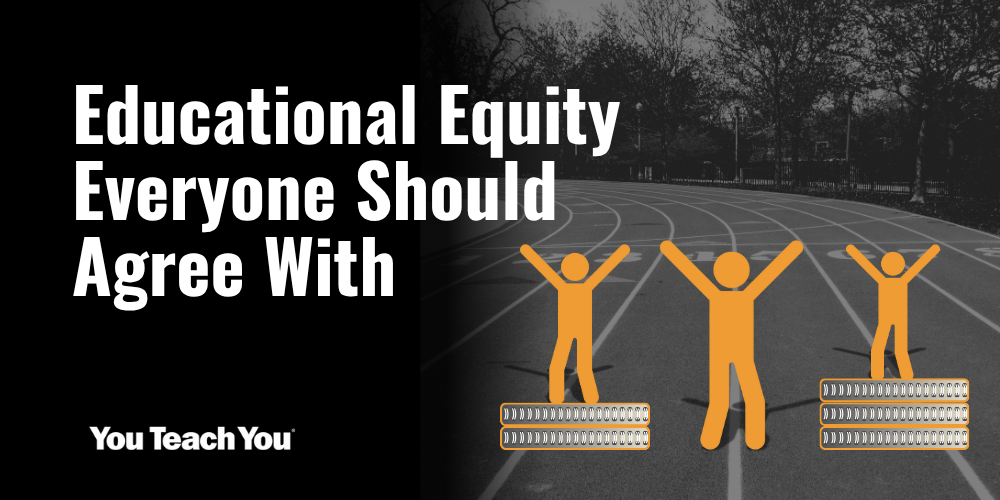Educational equity is one of the most divisive topics imaginable.
Trying to guarantee equal outcomes for every student by readjusting advantages is guaranteed to only produce resentment. There’s simply no way to make such a system fair for everybody.
But that shouldn’t be a problem, because that’s just fake equity anyway.
What’s real equity? Equal access to educational opportunities and resources, of course.
“But not everyone has equal access to educational opportunities and resources,” comes the inevitable reply. “That’s the problem!”
But why doesn’t everyone have equal access to educational opportunities and resources?
We all know why: money. Educational opportunities and resources have typically required money and lots of it.
So am I saying there’s no solution for students living in non-affluent areas?
No, I’m saying there’s an obvious solution. Make educational opportunities and resources so inexpensive that everyone can have access to them, regardless of where they happen to live.
Is this actually possible?
It most certainly is. Let me use the math method I created - You Teach You - to illustrate how it can be done:
-
Harness the proven power of self-instruction. You Teach You uses self-explanatory visual examples, related practice problems, and instant detailed feedback to create mastery-based, self-paced math instruction that’s fully accessible to all - even students in areas with staffing shortages, large class sizes, and few or no expert teachers. This time-honored “see it, do it, check it” learning method also reduces the burden on existing teachers while freeing them up to provide more individualized support, and even functions as free teacher training, since self-explanatory for the students means self-explanatory for the teacher too. And it’s self-remediating too, eliminating much of the need for specially trained remedial personnel. And it requires exactly zero expensive PD.
-
Require no technology. You Teach You is entirely book-based. The dramatic cost savings of such a no-tech approach - in terms of both the technology itself and infrastructure / maintenance - shouldn’t need to be stated.
-
Price resources realistically. The entire You Teach You basic math book series can be purchased for under $100. Compare that to the costs of the curricula currently in use.
-
Rely on materials that are readily available everywhere. You Teach You requires only pencils and paper.
-
Require no supplemental materials. The You Teach You series is self-contained, comprehensive, and complete. There are no extra materials - or costs - at all.
-
Make materials reproducible. You Teach You is designed to be as inexpensively distributed as possible. A copier can be all it takes.
-
Reduce assessment costs through built-in self-assessment. You Teach You’s self-checking feature reduces the need for excessive student testing, decreasing teacher workload and grading, and freeing up time and resources.
What’s left when math instruction is simplified this way? What’s eluded us for so long and what everyone should agree with: mathematical meritocracy. Every student gets a for-real and fair shot at getting ahead in math with this approach, with the only difference being how much hard work they’re willing to put in.
And what works for math can work for the rest of the curriculum too, with a little ingenuity.
So why has such a simple solution to educational equity eluded educators for so long?
Stay tuned!

